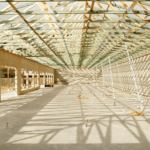
Two new hotels are being proposed for Deptford’s growing hotel district on Route 41 (Hurffville Rd). They are just starting the approval process and do not have a Deptford Planning Board meeting scheduled as of yet..
The two hotel brands looking to enter the Deptford marketplace are Home2 Suites (Hilton) and TownePlace Suites (Marriot). They are both targeting longer stay business travelers and would be owned by SSN Hotels out of Delaware.
The location for both planned hotels would be directly next to the existing Courtyard Hotel, and run with the bend of Rt 42.
If developed, there would be a total six 100+ room hotels in a half mile stretch of Route 41, in a main thriving commercial district of South Jersey.
Effectively there will be four hotels in a row along Route 42, and the other two are the original Deptford hotels next to the Uno’s restaurant.
*Article courtesy of 42Freeway
For more information about South Jersey land space for sale or lease in South Jersey or about any other South Jersey properties for sale or lease, please contact WCRE at 856-857-6300.
Wolf Commercial Real Estate, a full-service CORFAC International brokerage, and advisory firm, is a premier South Jersey commercial real estate broker that provides a full range of South Jersey commercial real estate listings and services, property management services, and marketing commercial offices, medical properties, industrial properties, land properties, retail buildings, and other South Jersey commercial properties for buyers, tenants, investors, and sellers.
Please visit our websites for a full listing of South Jersey commercial properties for lease or sale through our South Jersey commercial real estate brokerage firm.







